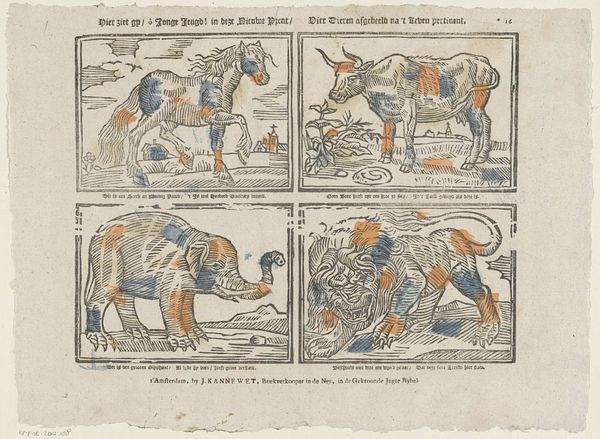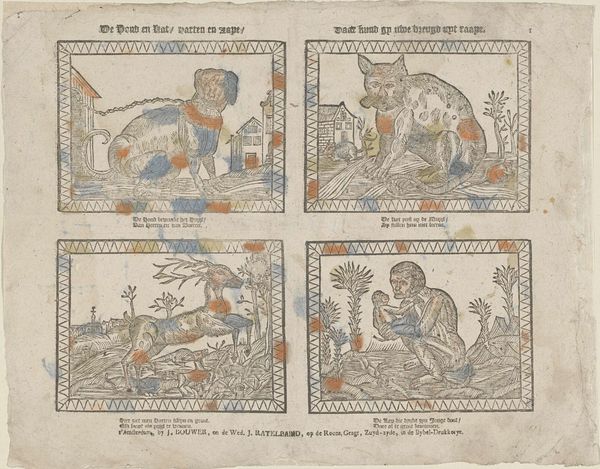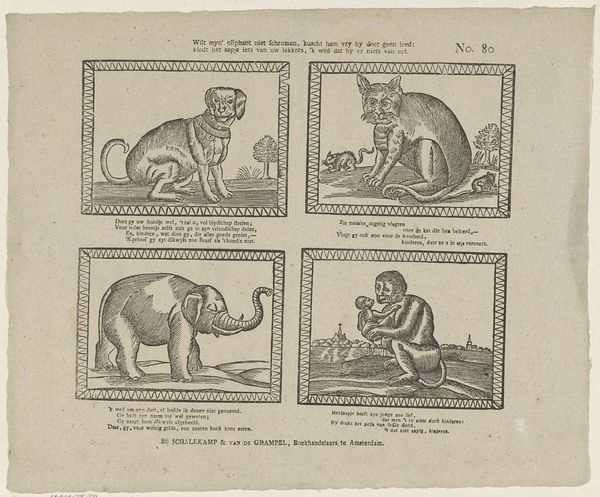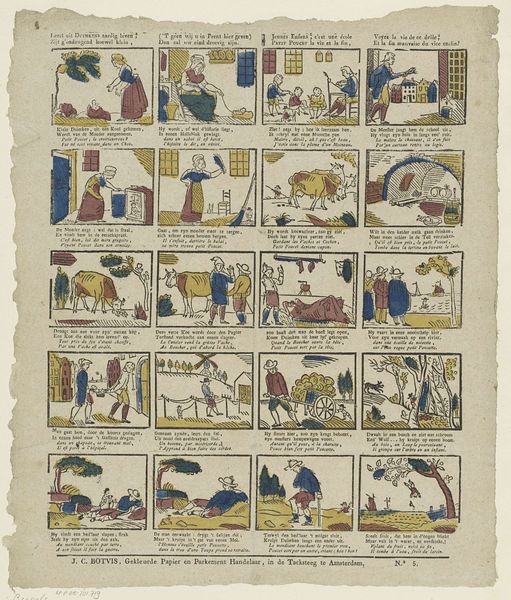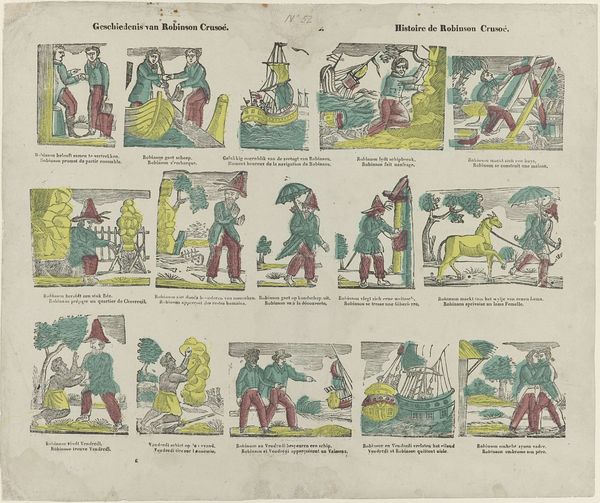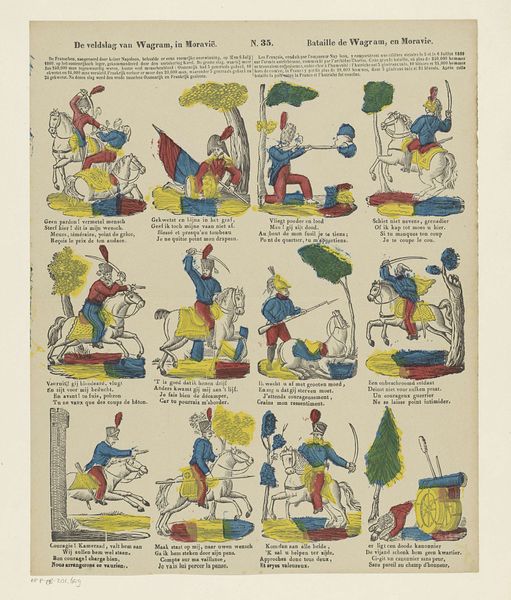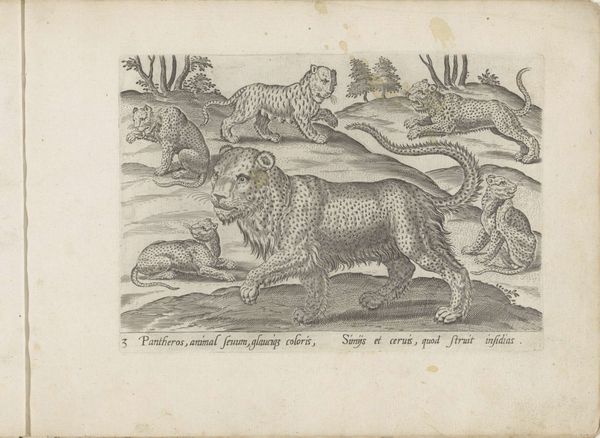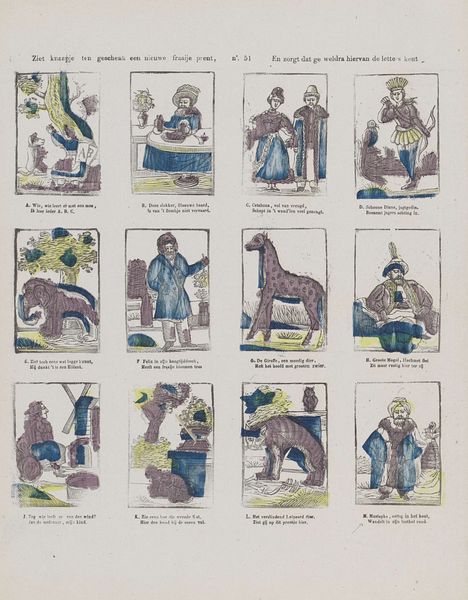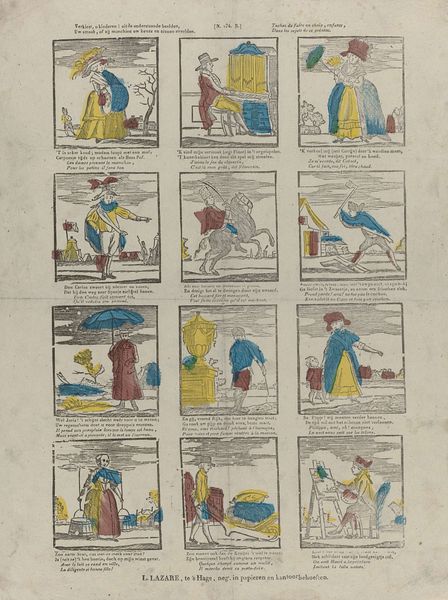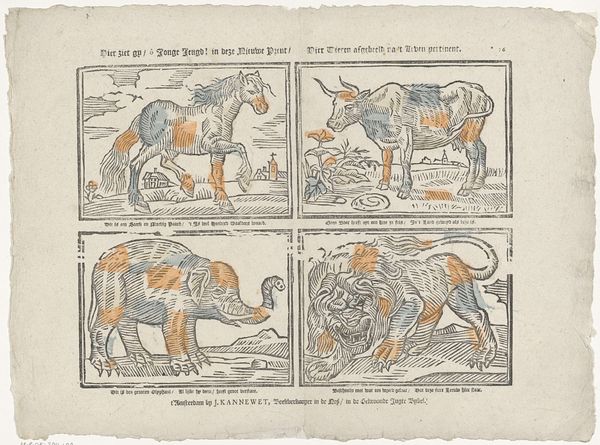![Wilt mijn olifant niet schromen, kust hem vrij hij doet geen leed [(...)] by Philippus Jacobus Brepols](/_next/image?url=https%3A%2F%2Fd2w8kbdekdi1gv.cloudfront.net%2FeyJidWNrZXQiOiAiYXJ0ZXJhLWltYWdlcy1idWNrZXQiLCAia2V5IjogImFydHdvcmtzL2Y0ZGI3ZjYzLTQ0OTgtNGIzOC1iMDZmLWRkNTZjNTRmZTAzYS9mNGRiN2Y2My00NDk4LTRiMzgtYjA2Zi1kZDU2YzU0ZmUwM2FfZnVsbC5qcGciLCAiZWRpdHMiOiB7InJlc2l6ZSI6IHsid2lkdGgiOiAxOTIwLCAiaGVpZ2h0IjogMTkyMCwgImZpdCI6ICJpbnNpZGUifX19&w=3840&q=75)
Wilt mijn olifant niet schromen, kust hem vrij hij doet geen leed [(...)] 1800 - 1833
0:00
0:00
print, engraving
#
animal
# print
#
figuration
#
genre-painting
#
engraving
Dimensions: height 426 mm, width 340 mm
Copyright: Rijks Museum: Open Domain
Philippus Jacobus Brepols created this hand-colored etching sometime in the late 18th or early 19th century. It depicts four scenes: a dog, a cat, an elephant, and a man. As an allegorical print, it invites us to consider the cultural meanings embedded in each image. Note how the animals and the man are covered in a patchwork of colors. This use of color defies the natural order, suggesting a world where traditional hierarchies and appearances are destabilized. What does it mean to see these figures stripped of their conventional identities? The accompanying verses offer further clues, framing each figure with moral lessons. The elephant, often a symbol of exoticism and power, is presented here as harmless, inviting affection rather than fear. Brepols seems to be asking us to reconsider our preconceptions. This etching reflects a society grappling with shifting social norms, and invites its viewers, even now, to question the status quo.
Comments
No comments
Be the first to comment and join the conversation on the ultimate creative platform.



